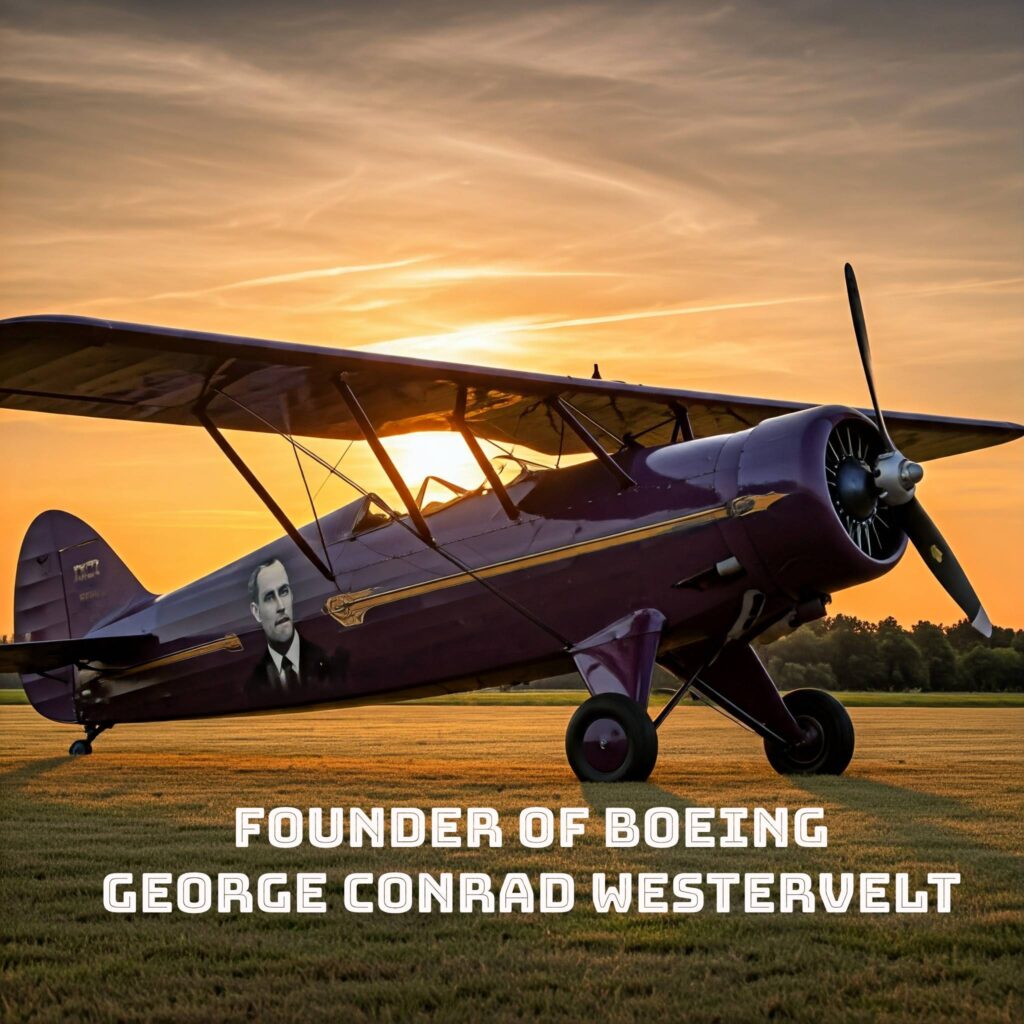When discussing the history of aviation, it’s impossible not to mention William Boeing, the pioneering mind behind one of the largest aircraft manufacturers in the world. Boeing’s journey from a timber businessman to a central figure in aviation history is not just about airplanes—it’s about vision, ambition, and the development of an industry that would change global travel forever.
The Early Life of William Boeing
William Edward Boeing was born on October 1, 1881, in Detroit, Michigan, to a prosperous family of German immigrants. His father, Wilhelm Böing, made a fortune in timber, which allowed William to attend prestigious schools in the U.S. and abroad. Although he began studying engineering at Yale University, he left before completing his degree, drawn to the opportunities in the lumber industry in the Pacific Northwest. Little did he know, this move would set the stage for his eventual leap into aviation.
From Timber to Airplanes: The First Step into Aviation
By 1903, Boeing had moved to Seattle, where he immersed himself in the timber business, but he soon became fascinated with the burgeoning world of aviation. His interest piqued after witnessing the early flights of aircraft, which at the time were rudimentary and often unreliable. In 1910, he attended an airshow in Los Angeles, solidifying his ambition to learn more about flying.
His passion for aviation grew when he took a flight with a barnstormer named Terah Maroney in 1915. This experience was pivotal. Disappointed by the quality of the aircraft he encountered, Boeing believed that he could build something better—an idea that would spark a global legacy.
The Founding of Boeing
In 1916, alongside naval engineer George Conrad Westervelt, Boeing founded the Pacific Aero Products Co. This small venture began in a boathouse in Seattle, where Boeing and his team constructed their first aircraft, the B&W seaplane. This two-person seaplane was a modest beginning, but it represented the birth of what would become an aviation giant.
Shortly after, in 1917, the United States entered World War I, and Boeing saw an opportunity to contribute. Pacific Aero Products was renamed the Boeing Airplane Company, and it started manufacturing planes for the U.S. Navy, marking the company’s first step into military aviation.
Expanding into New Horizons
After the war, Boeing continued to innovate, realizing that airplanes could serve a broader purpose beyond warfare. He anticipated the rise of commercial air travel, an industry still in its infancy. In 1927, Boeing created Boeing Air Transport, a company that would eventually merge with other airlines to form United Airlines, laying the foundation for modern air travel.
This period also saw the development of the Boeing Model 40, an airmail plane that was a significant milestone for the company. The success of the Model 40 marked Boeing’s transition into the commercial aviation sector, which would soon become the company’s main focus.
The Development of Iconic Aircraft
Throughout the 1930s and beyond, Boeing’s company grew exponentially. Notable creations like the Boeing 247, a twin-engine passenger plane, and the Boeing 314 Clipper, a large flying boat, positioned the company as a leader in both commercial and military aviation. However, it was during World War II that Boeing truly became a household name.
The Boeing B-17 Flying Fortress and the B-29 Superfortress were critical to the Allied war effort, cementing Boeing’s reputation as a premier military aircraft manufacturer. These aircraft played pivotal roles in the air war over Europe and the Pacific, contributing significantly to the eventual Allied victory.
Legacy and the Future of Boeing
William Boeing retired from the aviation industry in 1934, but the company he founded continued to soar to new heights. Boeing’s legacy is most evident in the modern jet age. The Boeing 707, introduced in 1958, revolutionized air travel, offering faster, more efficient service, and paving the way for the wide-body aircraft like the 747, which would become an icon of international travel.
Though William Boeing passed away in 1956, his influence on the aviation world endures. His company remains one of the world’s largest aerospace manufacturers, producing everything from passenger jets to space vehicles. Boeing’s foresight in recognizing the potential of airplanes for both military and civilian use helped shape the course of the 20th century.
William Boeing’s legacy as the founder of one of the most important companies in aviation history is undeniable. From humble beginnings in a Seattle boathouse to creating an aviation empire, his journey is a testament to innovation and perseverance. His vision not only built a company but also laid the groundwork for the global aviation industry as we know it today.



